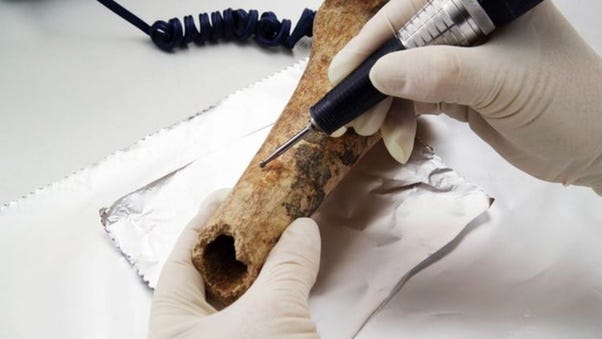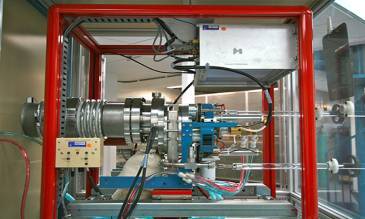Radiocarbon dating tools
Contents:
As a research tool, Lifeways regularly carries out radiocarbon dating. For this purpose we use only creditable laboratories offering competitive rates. That while the bison was the primary food resource on the plains, some bison kill sites also have deer, dog, bird, and antelope remains at them as well? Radiocarbon Dating Radiocarbon dating is a scientific analytical technique used for determining the age of samples which were once alive eg. Did you know that In many cases, the daughter nuclide itself is radioactive, resulting in a decay chain , eventually ending with the formation of a stable nonradioactive daughter nuclide; each step in such a chain is characterized by a distinct half-life.
In these cases, usually the half-life of interest in radiometric dating is the longest one in the chain, which is the rate-limiting factor in the ultimate transformation of the radioactive nuclide into its stable daughter. Isotopic systems that have been exploited for radiometric dating have half-lives ranging from only about 10 years e.
For most radioactive nuclides, the half-life depends solely on nuclear properties and is essentially a constant. It is not affected by external factors such as temperature , pressure , chemical environment, or presence of a magnetic or electric field. For all other nuclides, the proportion of the original nuclide to its decay products changes in a predictable way as the original nuclide decays over time. This predictability allows the relative abundances of related nuclides to be used as a clock to measure the time from the incorporation of the original nuclides into a material to the present.
The basic equation of radiometric dating requires that neither the parent nuclide nor the daughter product can enter or leave the material after its formation. The possible confounding effects of contamination of parent and daughter isotopes have to be considered, as do the effects of any loss or gain of such isotopes since the sample was created. It is therefore essential to have as much information as possible about the material being dated and to check for possible signs of alteration.
Alternatively, if several different minerals can be dated from the same sample and are assumed to be formed by the same event and were in equilibrium with the reservoir when they formed, they should form an isochron. This can reduce the problem of contamination. In uranium—lead dating , the concordia diagram is used which also decreases the problem of nuclide loss. Finally, correlation between different isotopic dating methods may be required to confirm the age of a sample.
For example, the age of the Amitsoq gneisses from western Greenland was determined to be 3.
What is Carbon (14C) Dating? Carbon Dating Definition
Accurate radiometric dating generally requires that the parent has a long enough half-life that it will be present in significant amounts at the time of measurement except as described below under "Dating with short-lived extinct radionuclides" , the half-life of the parent is accurately known, and enough of the daughter product is produced to be accurately measured and distinguished from the initial amount of the daughter present in the material.
The procedures used to isolate and analyze the parent and daughter nuclides must be precise and accurate.
This normally involves isotope-ratio mass spectrometry. The precision of a dating method depends in part on the half-life of the radioactive isotope involved. For instance, carbon has a half-life of 5, years. After an organism has been dead for 60, years, so little carbon is left that accurate dating cannot be established.
On the other hand, the concentration of carbon falls off so steeply that the age of relatively young remains can be determined precisely to within a few decades. If a material that selectively rejects the daughter nuclide is heated, any daughter nuclides that have been accumulated over time will be lost through diffusion , setting the isotopic "clock" to zero. The temperature at which this happens is known as the closure temperature or blocking temperature and is specific to a particular material and isotopic system.
These temperatures are experimentally determined in the lab by artificially resetting sample minerals using a high-temperature furnace. As the mineral cools, the crystal structure begins to form and diffusion of isotopes is less easy.
- catch 22 dating website.
- interracial dating language barrier.
- cupid matchmaking.
- dating for country lovers uk.
- Radiocarbon Dating.
- Radiometric dating - Wikipedia;
- How Does Carbon Dating Work.
At a certain temperature, the crystal structure has formed sufficiently to prevent diffusion of isotopes. This temperature is what is known as closure temperature and represents the temperature below which the mineral is a closed system to isotopes. Thus an igneous or metamorphic rock or melt, which is slowly cooling, does not begin to exhibit measurable radioactive decay until it cools below the closure temperature. The age that can be calculated by radiometric dating is thus the time at which the rock or mineral cooled to closure temperature.
This field is known as thermochronology or thermochronometry. The mathematical expression that relates radioactive decay to geologic time is [12] [15]. The equation is most conveniently expressed in terms of the measured quantity N t rather than the constant initial value N o. The above equation makes use of information on the composition of parent and daughter isotopes at the time the material being tested cooled below its closure temperature. This is well-established for most isotopic systems.
What is Radiocarbon Dating?
Plotting an isochron is used to solve the age equation graphically and calculate the age of the sample and the original composition. Radiometric dating has been carried out since when it was invented by Ernest Rutherford as a method by which one might determine the age of the Earth. In the century since then the techniques have been greatly improved and expanded.
The mass spectrometer was invented in the s and began to be used in radiometric dating in the s. It operates by generating a beam of ionized atoms from the sample under test. The ions then travel through a magnetic field, which diverts them into different sampling sensors, known as " Faraday cups ", depending on their mass and level of ionization.
On impact in the cups, the ions set up a very weak current that can be measured to determine the rate of impacts and the relative concentrations of different atoms in the beams. Uranium—lead radiometric dating involves using uranium or uranium to date a substance's absolute age.
Carbon dating
This scheme has been refined to the point that the error margin in dates of rocks can be as low as less than two million years in two-and-a-half billion years. Uranium—lead dating is often performed on the mineral zircon ZrSiO 4 , though it can be used on other materials, such as baddeleyite , as well as monazite see: Zircon has a very high closure temperature, is resistant to mechanical weathering and is very chemically inert.
Zircon also forms multiple crystal layers during metamorphic events, which each may record an isotopic age of the event. One of its great advantages is that any sample provides two clocks, one based on uranium's decay to lead with a half-life of about million years, and one based on uranium's decay to lead with a half-life of about 4. This can be seen in the concordia diagram, where the samples plot along an errorchron straight line which intersects the concordia curve at the age of the sample.

This involves the alpha decay of Sm to Nd with a half-life of 1. Accuracy levels of within twenty million years in ages of two-and-a-half billion years are achievable. This involves electron capture or positron decay of potassium to argon Potassium has a half-life of 1. This is based on the beta decay of rubidium to strontium , with a half-life of 50 billion years. This scheme is used to date old igneous and metamorphic rocks , and has also been used to date lunar samples.
Closure temperatures are so high that they are not a concern. Rubidium-strontium dating is not as precise as the uranium-lead method, with errors of 30 to 50 million years for a 3-billion-year-old sample. A relatively short-range dating technique is based on the decay of uranium into thorium, a substance with a half-life of about 80, years.
It is accompanied by a sister process, in which uranium decays into protactinium, which has a half-life of 32, years. While uranium is water-soluble, thorium and protactinium are not, and so they are selectively precipitated into ocean-floor sediments , from which their ratios are measured.

The scheme has a range of several hundred thousand years. A related method is ionium—thorium dating , which measures the ratio of ionium thorium to thorium in ocean sediment. Radiocarbon dating is also simply called Carbon dating. Carbon is a radioactive isotope of carbon, with a half-life of 5, years, [25] [26] which is very short compared with the above isotopes and decays into nitrogen. Carbon, though, is continuously created through collisions of neutrons generated by cosmic rays with nitrogen in the upper atmosphere and thus remains at a near-constant level on Earth.
The carbon ends up as a trace component in atmospheric carbon dioxide CO 2. A carbon-based life form acquires carbon during its lifetime.
Radiocarbon Dating and Archaeology
Plants acquire it through photosynthesis , and animals acquire it from consumption of plants and other animals. When an organism dies, it ceases to take in new carbon, and the existing isotope decays with a characteristic half-life years.
The proportion of carbon left when the remains of the organism are examined provides an indication of the time elapsed since its death. This makes carbon an ideal dating method to date the age of bones or the remains of an organism. The carbon dating limit lies around 58, to 62, years. The rate of creation of carbon appears to be roughly constant, as cross-checks of carbon dating with other dating methods show it gives consistent results.
However, local eruptions of volcanoes or other events that give off large amounts of carbon dioxide can reduce local concentrations of carbon and give inaccurate dates. The releases of carbon dioxide into the biosphere as a consequence of industrialization have also depressed the proportion of carbon by a few percent; conversely, the amount of carbon was increased by above-ground nuclear bomb tests that were conducted into the early s. Also, an increase in the solar wind or the Earth's magnetic field above the current value would depress the amount of carbon created in the atmosphere.
This involves inspection of a polished slice of a material to determine the density of "track" markings left in it by the spontaneous fission of uranium impurities. The uranium content of the sample has to be known, but that can be determined by placing a plastic film over the polished slice of the material, and bombarding it with slow neutrons. This causes induced fission of U, as opposed to the spontaneous fission of U. The fission tracks produced by this process are recorded in the plastic film.
The uranium content of the material can then be calculated from the number of tracks and the neutron flux. This scheme has application over a wide range of geologic dates. For dates up to a few million years micas , tektites glass fragments from volcanic eruptions , and meteorites are best used.